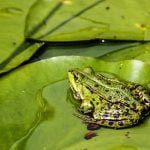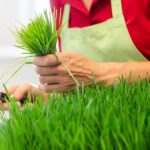Are you looking to bring the beauty and serenity of nature into your home? Indoor gardens are the best idea for indoor gardens and can be a perfect solution. Whether you live in a small apartment or a spacious house, indoor gardening is a great way to add greenery and life to your living space. In this article, we will explore the numerous benefits of indoor gardens and provide helpful tips for creating and maintaining your own indoor oasis.
Indoor gardens offer a range of benefits, from improving air quality to reducing stress and increasing productivity. With the right plants and care, an indoor garden can thrive in any home environment. Additionally, indoor gardens are a great way to incorporate nature into urban living spaces and bring a sense of tranquility into your home.
In the following sections, we will delve into various aspects of indoor gardening, from choosing the perfect location and utilizing creative containers to providing adequate lighting and incorporating vertical gardening techniques. Whether you’re new to gardening or have experience with outdoor planting, there’s something for everyone to learn about turning your living space into a flourishing indoor garden. So let’s get started on this exciting journey towards embracing the beauty and functionality of indoor gardens.
Choosing the Perfect Location
When it comes to growing an indoor garden, the location is crucial to ensure the success of your plants. Whether you’re working with limited space or have a roomy spot to work with, finding the best location for your indoor garden is essential.
Consider Sunlight Requirements
Different plants have varying needs when it comes to sunlight. Some may thrive in bright, direct sunlight, while others prefer indirect or low light conditions. When choosing a location for your indoor garden, consider the sunlight requirements of the plants you plan to grow.
South-facing windows typically receive the most sunlight throughout the day, making them ideal for sun-loving plants. East and west-facing windows also provide good light for a certain amount of time. For plants that require less light, such as snake plants or pothos, north-facing windows can be suitable.
Temperature and Humidity
In addition to light, temperature and humidity levels are also important factors to consider when choosing a location for your indoor garden. Most indoor plants thrive in temperatures ranging between 60-75°F (15-24°C) during the day and slightly cooler at night.
Avoid placing your plants near drafts from doors or windows or near heat sources like radiators that can cause fluctuations in temperature. Additionally, some plants may benefit from higher humidity levels, so placing them in a bathroom or kitchen where moisture levels are higher can be advantageous.
Spatial Considerations
Space availability is another important consideration when choosing the perfect location for your indoor garden. If you live in a small apartment or have limited free space, consider utilizing vertical gardening techniques or creating a designated corner for your plants. Wall-mounted planters or hanging baskets can be great options for maximizing space while adding greenery to your home.
Finding the best spot for your indoor garden involves considering sunlight requirements, temperature and humidity levels, as well as spatial considerations based on available space. By taking these factors into account, you can create an optimal environment for your indoor plants to thrive and beautify your home.
Container Gardening
Choosing the Right Containers
When it comes to container gardening, the options are nearly endless. From traditional terra cotta pots to modern hanging planters, there is a container to suit every style and preference. When choosing the right containers for your indoor garden, consider the size and shape of the plant you want to grow, as well as the aesthetic you want to achieve. Hanging planters work well for trailing plants, while small pots are ideal for herbs and succulents.
Creative Container Ideas
Get creative with your container choices by repurposing items such as mason jars, tin cans, or even old teacups. These unique containers not only add charm to your indoor garden but also help reduce waste by giving new life to everyday items. Additionally, consider utilizing vertical wall planters or tiered shelving units to maximize space in smaller areas.
Maintenance Tips for Container Gardening
Proper maintenance is key to keeping your container garden thriving. Ensure that each container has adequate drainage to prevent overwatering, and use high-quality potting mix tailored to the needs of your specific plants. Regularly check for signs of pests or disease and provide appropriate water and sunlight based on the requirements of each individual plant.
Incorporating creative containers into your indoor garden is undoubtedly one of the best ideas for indoor gardens, allowing you to personalize your green space while maximizing limited space in a stylish way.
Low-Maintenance Plants
When it comes to creating an indoor garden, choosing the right plants is crucial for success. Low-maintenance plants are the best idea for indoor gardens, as they require minimal care and attention while still adding beauty and greenery to your space.
Some of the easiest indoor plants to care for include snake plants, pothos, and peace lilies. These plants are known for their ability to thrive in low light conditions and can tolerate infrequent watering, making them perfect for busy individuals or those new to gardening.
One of the key benefits of low-maintenance plants is that they can adapt to various environmental conditions, making them ideal for indoor spaces with different lighting and temperature levels. Additionally, these plants are known for their air-purifying qualities, improving the air quality within your home while requiring minimal effort on your part.
This makes them a great choice for anyone looking to add some greenery to their indoor space without having to invest a lot of time in maintenance.
Incorporating low-maintenance plants into your indoor garden can also provide a sense of calm and tranquility, as their lush foliage can create a soothing atmosphere within your home. Whether you have limited gardening experience or a busy schedule that leaves little time for plant care, opting for low-maintenance plants is undoubtedly one of the best ideas for indoor gardens.
With a wide variety of options available, you can easily find the perfect low-maintenance plants to suit your personal style and indoor environment.
Lighting Solutions
When it comes to indoor gardening, providing the right amount of light for your plants is essential for their growth and overall health. Selecting the best lighting solutions for your indoor garden can make a significant difference in the success of your plants. One of the best ideas for indoor gardens is to utilize natural light as much as possible.
Placing your indoor garden near windows or glass doors that receive ample sunlight can help your plants thrive. If natural light is insufficient, consider using artificial grow lights to supplement the lighting needs of your indoor garden.
Another great idea for providing adequate light to your indoor garden is to understand the specific light requirements of your plants. Different plant species have varying needs when it comes to light intensity and duration. For example, tropical plants typically require bright, indirect sunlight, while some succulents and cacti thrive in direct sunlight. By researching and understanding the light preferences of your indoor plants, you can tailor your lighting solutions to meet their specific needs.
In addition to selecting the right location and understanding plant-specific light requirements, implementing timers for your grow lights can be a practical solution for ensuring consistency in providing light to your indoor garden. Timers can help simulate natural daylight cycles and provide a consistent amount of light each day, promoting healthy growth for your indoor plants.
| Indoor Gardening Lighting Solutions | Benefits |
|---|---|
| Natural Light | It provides necessary nutrients and energy for plant growth. |
| Artificial Grow Lights | Supplemental lighting source when natural light is insufficient. |
| Timers | Ensures consistency in providing light cycles for healthy plant growth. |
Vertical Gardening
One of the advantages of vertical gardening is that it not only saves space but also provides an opportunity to create a stunning visual display in your home. You can mix and match different plants to create a unique and eye-catching design that adds beauty and life to any room. Additionally, vertical planters can also act as natural air purifiers, enhancing the air quality inside your home.
When choosing plants for your vertical garden, consider low-maintenance varieties that are suitable for indoor environments. Some popular choices include pothos, spider plants, and peace lilies. These plants are known for their ability to thrive indoors with minimal care, making them perfect for vertical gardening.
| Advantages of Vertical Gardening | Recommended Low-Maintenance Plants |
|---|---|
| Saves space | Pothos |
| Enhances visual display | Spider plants |
| Acts as natural air purifiers | Peace lilies |
Creative Design Ideas
When it comes to incorporating indoor gardens into your home decor, there are countless creative design ideas to consider. Whether you have limited space or a spacious area to work with, there are various ways to seamlessly blend the beauty of nature with your interior design. Here are some creative ideas to help you incorporate indoor gardens into your home decor:
- Hang a variety of trailing plants in macrame plant hangers throughout your living room or bedroom.
- Create a botanical display on floating shelves, showcasing a mix of small potted plants and succulents.
- Design a mini herb garden in your kitchen by using wall-mounted planters or a dedicated windowsill planter box.
In addition, consider adding touches of greenery to unexpected places, such as the bathroom or home office. Incorporating indoor gardens into your home decor not only adds visual interest and natural texture but also promotes air purification and a sense of tranquility.
Another great idea for indoor gardens is to introduce statement plants like fiddle leaf fig trees or monstera deliciosa in decorative pots as focal points within your living space. These larger plants can serve as eye-catching pieces that elevate the overall aesthetic of the room. Additionally, don’t be afraid to experiment with different plant arrangements and groupings to create unique and personalized displays throughout your home.
Ultimately, the best idea for indoor gardens is one that complements your personal style and enhances the ambiance of your living environment. By incorporating these creative design ideas, you can seamlessly integrate the beauty of nature into your home decor while enjoying the numerous benefits of indoor gardening.
Maintenance Tips
Maintaining an indoor garden is essential to keep it thriving all year round. With proper care and attention, your indoor garden can continue to bring beauty and greenery into your home. Here are some maintenance tips to help you keep your indoor garden in top shape:
- Regular watering: Different plants have different water requirements, so make sure to research the specific needs of each plant in your indoor garden. Some may need to be watered daily, while others can go for longer periods without water.
- Monitor humidity levels: Indoor environments can sometimes have low humidity, which can affect certain plants. Consider using a humidifier or misting the leaves of your plants to increase the humidity around them.
- Pruning and trimming: Keep an eye on the growth of your plants and prune or trim them as needed. This will not only help maintain their shape and appearance but also promote healthy growth.
In addition to these basic maintenance tasks, it’s also important to regularly check for signs of pests or disease in your indoor garden. Catching and addressing these issues early can prevent them from spreading and causing damage to your plants.
Remember to fertilize your indoor plants as needed, following the instructions on the fertilizer packaging. Proper fertilization will provide essential nutrients that will help your plants thrive.
By following these maintenance tips, you can ensure that your indoor garden continues to flourish throughout the year, bringing joy and natural beauty into your home.
Incorporating regular maintenance into your routine is crucial for keeping an indoor garden thriving all year round.
Conclusion
In conclusion, indoor gardens provide numerous benefits and are an excellent way to bring a touch of nature into your home. From improving air quality to reducing stress and increasing productivity, the advantages of indoor gardening are undeniable. By carefully choosing the perfect location, utilizing space-saving containers, selecting low-maintenance plants, providing adequate lighting, and incorporating creative design ideas like vertical gardening, you can create a beautiful and functional indoor garden that enhances your living space.
With the right maintenance tips and techniques, you can ensure that your indoor garden thrives all year round. Whether you have a green thumb or are new to gardening, there are plenty of easy-to-care-for plants that will flourish in your indoor space. By embracing the beauty and functionality of indoor gardens, you can create a peaceful sanctuary in your home while enjoying the pleasure of nurturing plant life.
Frequently Asked Questions
How Do You Grow a Successful Indoor Garden?
Growing a successful indoor garden requires careful attention to lighting, watering, and soil conditions. You need to ensure that your plants are getting enough sunlight, whether natural or artificial. Good drainage and proper watering techniques are also essential for healthy plant growth.
What Does Every Indoor Gardener Need?
Every indoor gardener needs the right tools and equipment to succeed. This includes containers with good drainage, high-quality potting mix, a watering can or spray bottle for gentle watering, and a small shovel or hand trowel for planting and repotting. Additionally, having access to good light sources is crucial for indoor gardening success.
What Are the Easiest Food Plants to Grow Indoors?
Some of the easiest food plants to grow indoors include herbs like basil, mint, and cilantro. These herbs are relatively low-maintenance and can thrive in containers on a sunny windowsill. Other easy options include green onions, cherry tomatoes, and chili peppers which can also be grown in pots indoors with sufficient light and care.

Welcome to my gardening blog! I am passionate about plants and enjoy sharing my knowledge and experiences with others. In this blog, I will write about everything related to gardening, from tips on how to get started to updates on my own garden projects.





